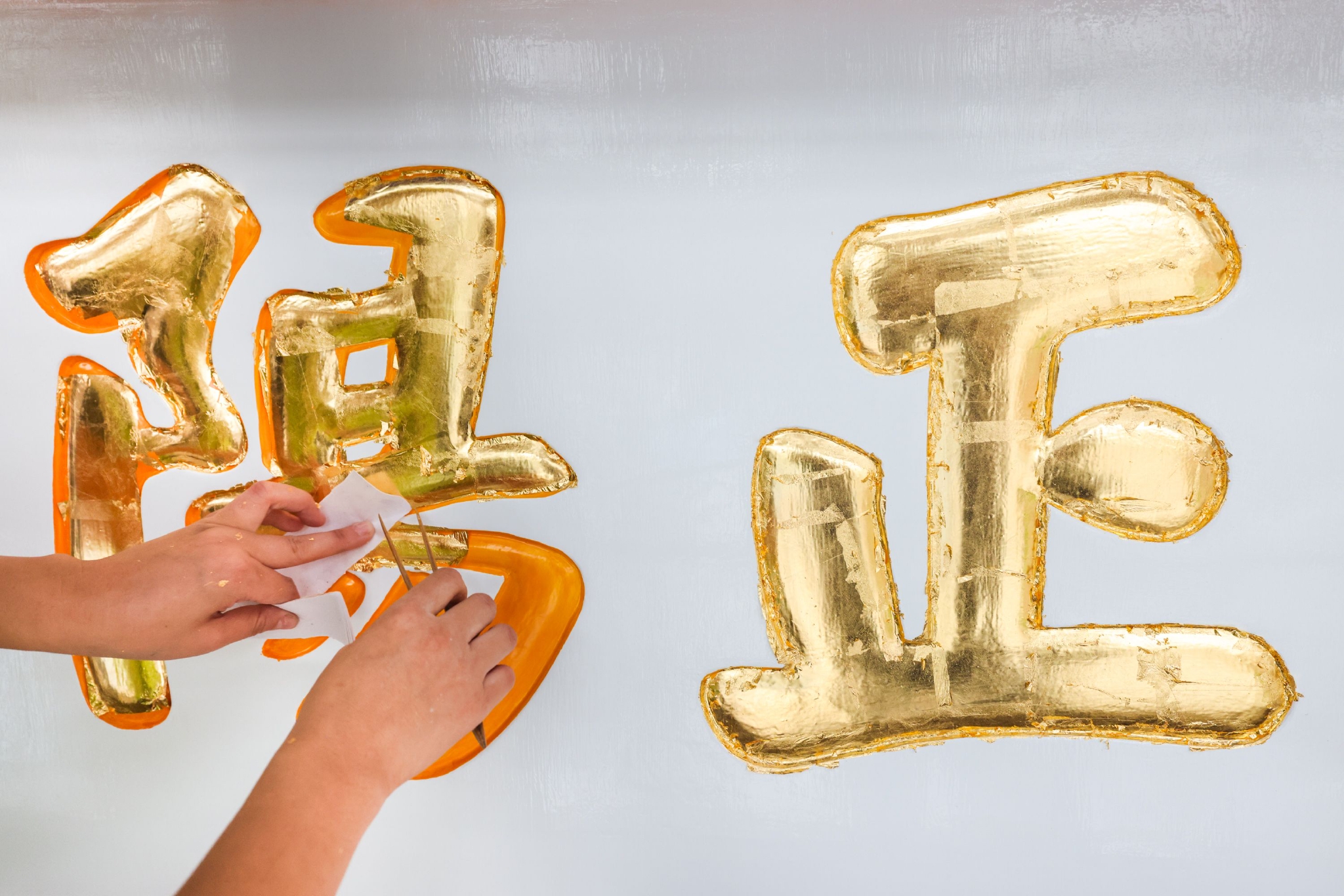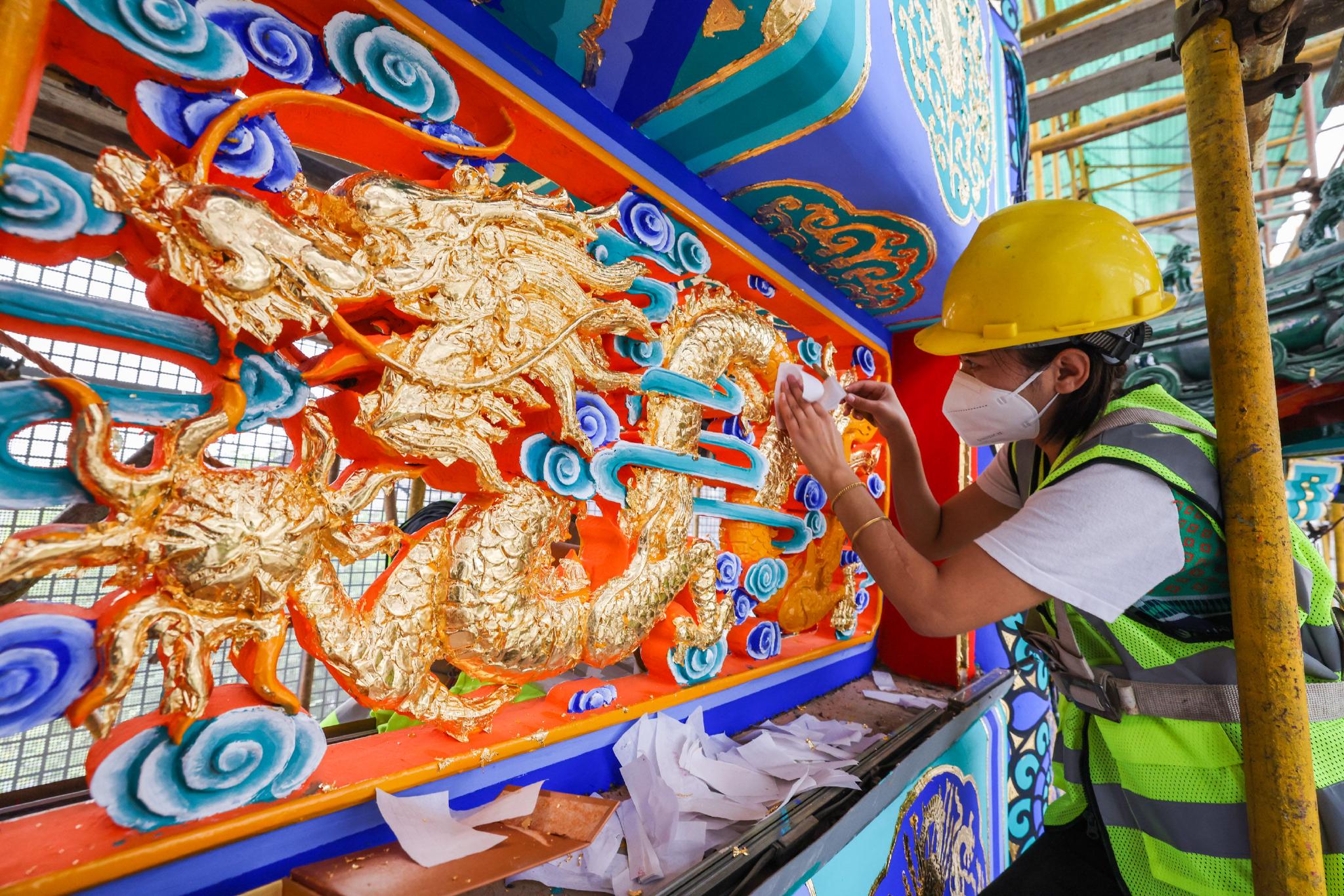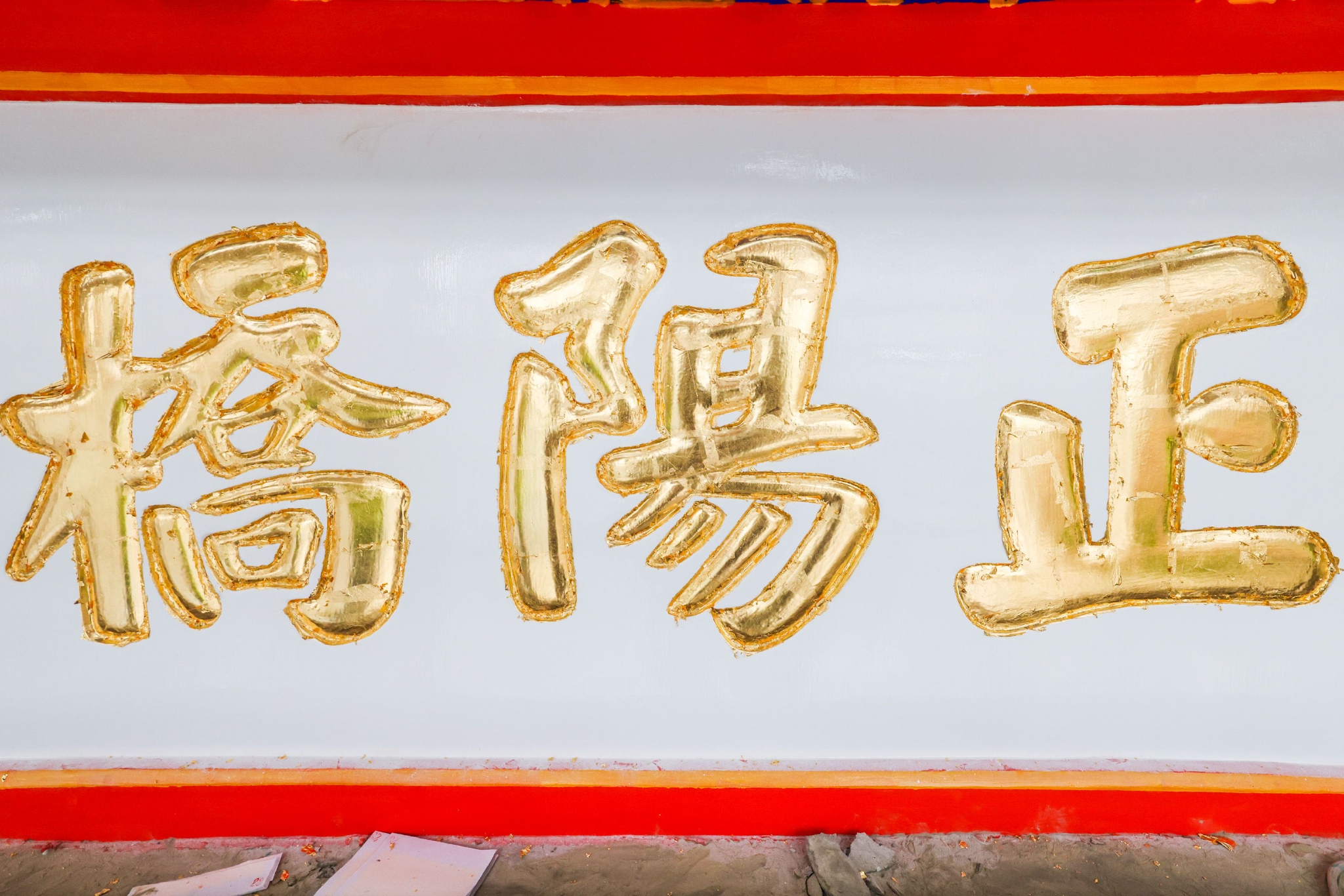Hold your breath with 500 pieces of gold foil! The plaque of the five arches in the front door is "gilded" today
Release time:
2023-07-22
Source:
Dongguan Jinsheng Gold Leaf Company

The old Beijing folk song "Qianmen Tower is nine zhang nine, with four gates, three bridges, and five archways." highlights the towering height of Qianmen Tower and its important position in the hearts of Beijing people. After a month of intense construction, the renovation project for the oil decoration of the five archways in the front door on the central axis is nearing its end. On the morning of October 1st, the three characters "Zhengyang Bridge" on the central plaque began to be "gilded".
The Qianmen Wupailou was built during the Zhengtong period of the Ming Dynasty, with a height of 14 meters and a width of 45 meters. It is a towering architectural style with five rooms, six columns, and five floors, hence the name "Wupailou". The current archway was rebuilt in early 2008. After years of wind and rain, the oil decoration layer cracked and the color paintings faded. In early September of this year, Dongcheng District launched an oil decoration and color painting renovation of the five archways. As of now, over 90% of the project has been completed, and the final "gold plating" project has also arrived. The "gilding" process is mostly used in high standard ancient buildings, such as the four column and seven floor archway of the VIP building of Beijing Hotel.

At seven o'clock in the morning, a layer of yellow gel had already been attached to the three words "Zhengyangmen" on the plaque. Kang Lihong gently touched the lower surface with her index finger, "Just right!" She was referring to the touch. Originally, the yellow colloid was a gold glue that had been pre applied the previous afternoon. After one night, the overnight glue had stickiness and did not dry thoroughly. 15 years of painting experience told her that now is the best time to "apply gold". If the gold foil is applied too early, it will wrinkle, but if the glue dries too late, it will not stick.
Applying gold glue not only requires attention to temperature, but also involves a complex process. On the prepared new ground battle, we first use yellow paint as the base, which we call 'wrapping yellow glue'. After the yellow glue is fully dried, we 'choke powder', which is to use bean wrap cloth to wrap talcum powder and lightly pat it on top, to isolate the paint and gold, prevent flying gold from falling to other parts of the archway and causing pollution. Finally, we use a small brush to apply gold glue
One night passed, and the gold glue was in place. The foil applicators also covered their hands with talcum powder to prevent the gold material from getting on their hands, and the "gilding" officially began. There is a bag hanging on the left wrist, containing 500 brand new gold foils. With a small bamboo tweezer in his right hand, he gently picks up a piece of gold foil and sticks it at the beginning of the pen with the character "Zheng". The gold foil is 9.33 centimeters long, golden in color, bright and soft. She held her breath and glued it one by one, pressing and trimming it with a cotton swab bit by bit. The resulting gold foil was straight, smooth, and shining with a dazzling golden light.

The "gilding" tests craftsmanship and endurance. Touch for about an hour, breathe evenly and move gently without saying a word. This is what we often say 'the atmosphere dares not breathe', because gold foil is as thin as cicada wings and can be broken by blowing bullets. Breathing or speaking may wrinkle the gold foil, so extra caution is needed
Starting from 1pm yesterday afternoon when the gold glue was applied, the gilding will be basically completed within about 24 hours, with the aim of mastering the heat of the glue. After the gold foil and gold glue are fused and dried thoroughly, the plaque will undergo the final "oiling" process, which is to apply the last layer of varnish to make the overall light up, and finally present a golden and three-dimensional visual effect.

Why does the plaque on the five archways of the front door say "Zhengyang Bridge"? It turned out that from the overpass northward, passing through the Zhushikou and Wupailou, there was a grand stone bridge in history called Zhengyang Bridge. It was a large stone bridge across the Moat outside the Zhengyang Gate, the south gate of Beijing city fortifications in the Ming and Qing Dynasties, and an integral part of the central axis. The ancient Chinese bridges have the habit of building memorial archway at the two ends. These memorial archway are called "bridge arches". The arches of Zhengyang Bridge are the five arches to the south.
The original plaque of "Zhengyang Bridge" on the Wupai Building disappeared around 1900. In the mid-1950s, the Zhengyang Bridge was rebuilt again with asphalt pavement. In the 1970s, the Moat was covered and transformed into a road. Since then, the Zhengyang Bridge has completely disappeared. The five archways related to the bridge have been continuously continued in various ways. There is still the plaque of "Zhengyang Bridge" on the rebuilt Wupai Building. I hope to continue the grandeur of the Wupailou and add color to the central axis through color painting renovation, "said the relevant person in charge of the Dongcheng District Urban Management Committee.
Next
2025-09-18
How to apply gold foil to a painting
2025-09-15
Gold Leaf In Rolls how to use and get it
2025-06-20

